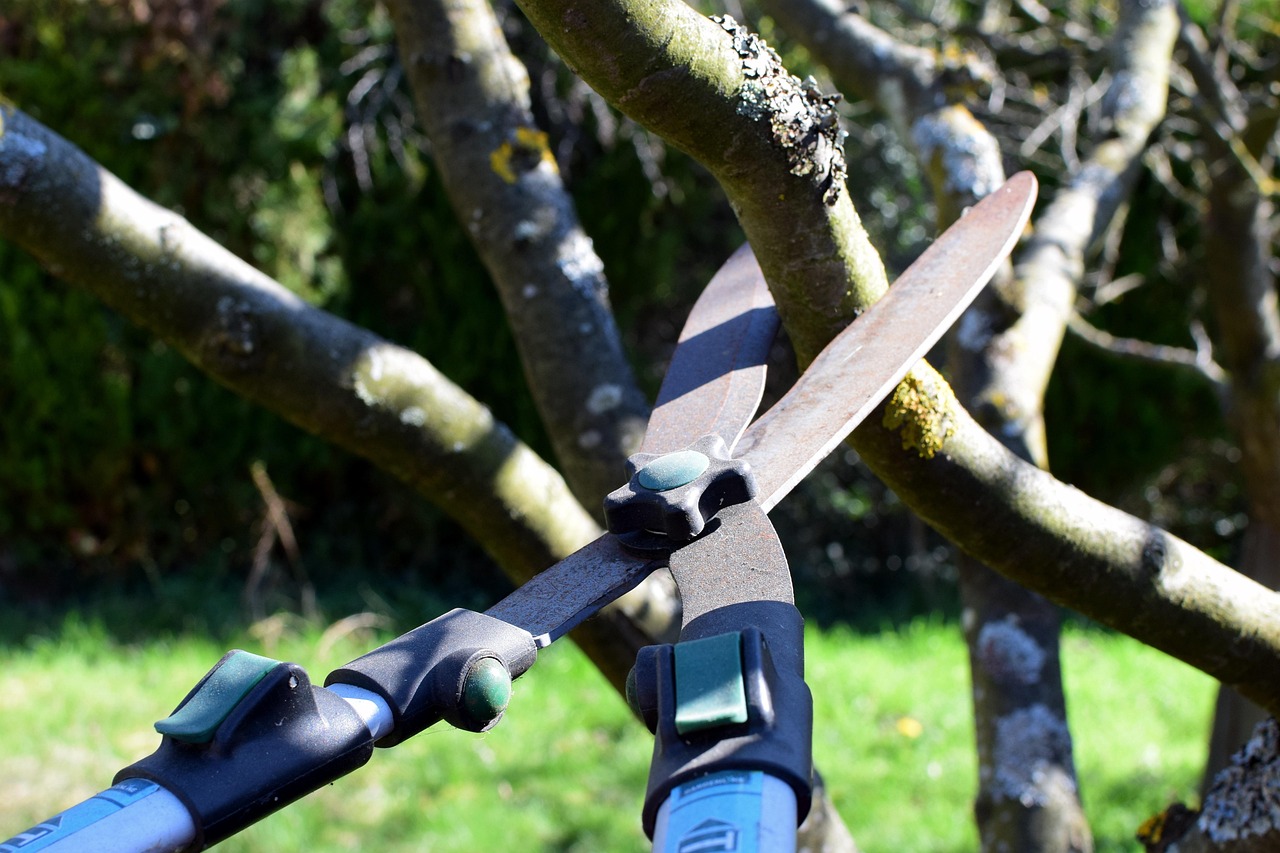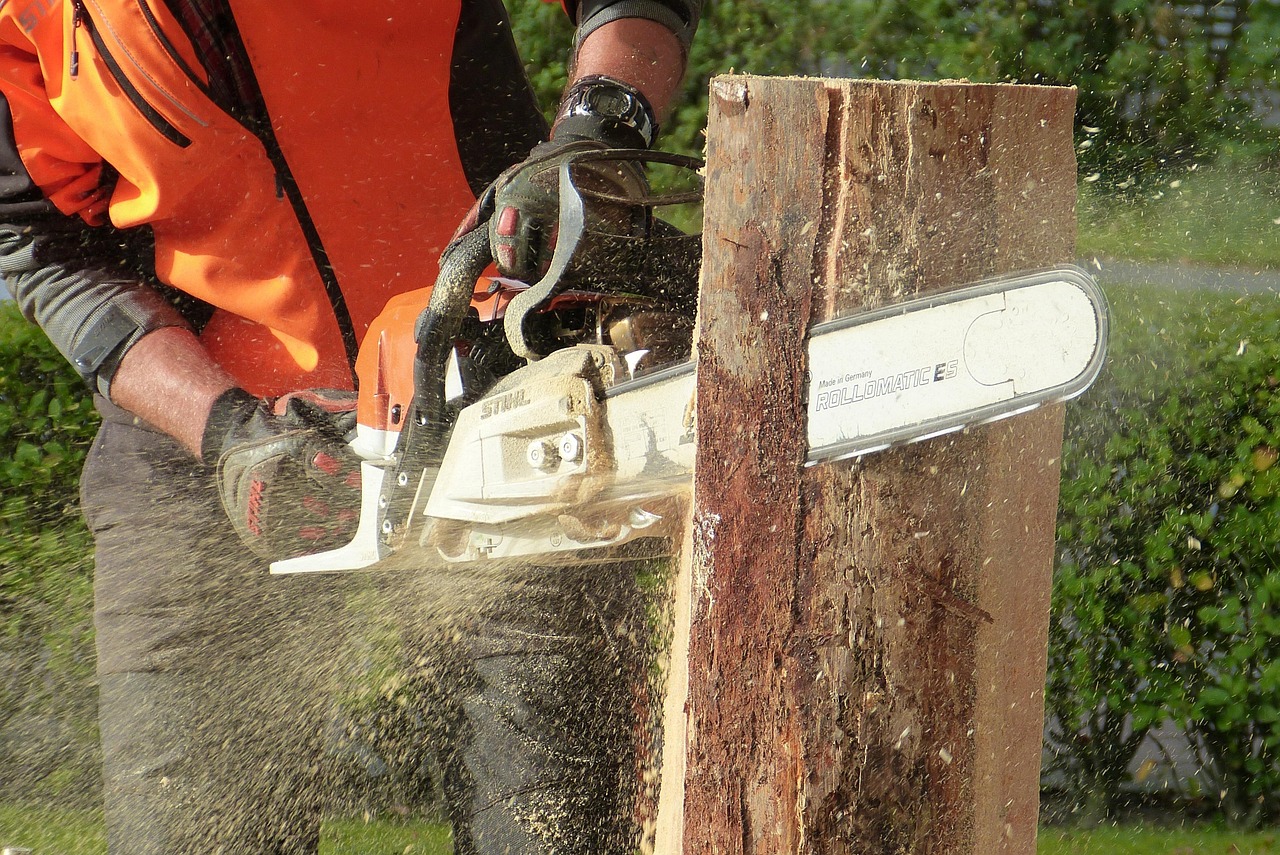Tulip tree pruning methods involve selective trimming to promote healthy growth, enhance shape, and remove dead or diseased branches. Regular maintenance is essential for the tree’s overall health and longevity.
The tulip tree, or Liriodendron tulipifera, is a stunning deciduous tree native to North America. Known for its unique tulip-shaped flowers and towering height, it can reach up to 100 feet tall. Proper pruning is crucial for maintaining its beauty and structural integrity. This process not only encourages healthy growth but also helps prevent potential hazards caused by weak or unhealthy branches.

Pruning is best done during specific times of the year to maximize the tree’s health and growth potential. The ideal times for pruning tulip trees are late winter to early spring, before new growth begins. This timing minimizes stress on the tree and allows for quicker recovery. Understanding the different methods of pruning can help ensure that your tulip tree remains vibrant and healthy.
Understanding Tulip Tree Pruning Methods
There are several key methods of pruning that are effective for maintaining tulip trees. Each method serves a specific purpose, whether it’s shaping the tree, promoting healthy growth, or removing problematic branches. Below are some common pruning techniques:
- Thinning: This method involves removing select branches to improve air circulation and light penetration throughout the tree. Thinning helps reduce the risk of disease and encourages more robust growth.
- Heading: Heading involves cutting back a branch to a smaller size or to a bud. This technique is often used to control the tree’s height and shape. It can stimulate new growth in the desired direction.
- Cleaning: Cleaning focuses on removing dead, damaged, or diseased branches. This practice is vital for maintaining the health of the tree and preventing the spread of diseases.
- Reduction: Reduction pruning reduces the size of a tree while maintaining its natural shape. This method is useful for trees that have outgrown their space or are interfering with structures.
Each of these methods can be employed individually or in combination, depending on the specific needs of the tree and the desired outcome. It is essential to understand when and how to apply these techniques effectively.

Tools Needed for Pruning Tulip Trees
Having the right tools is critical for successful pruning. Here are some essential tools you should consider using:
- Hand pruners: Ideal for small branches up to ¾ inch thick.
- Loppers: Useful for branches that are between ¾ inch and 2 inches thick.
- Saws: A pruning saw is necessary for larger branches that exceed 2 inches in diameter.
- Safety gear: Always wear gloves, goggles, and a hard hat to protect yourself from falling debris.
Using sharp, clean tools will provide cleaner cuts, promoting faster healing for the tree. It is important to disinfect tools between cuts, especially when removing diseased branches, to prevent spreading infections.
Best Practices for Pruning Tulip Trees
When pruning tulip trees, there are several best practices to keep in mind. These practices help ensure that the tree remains healthy and continues to thrive:

- Aim for symmetry: When shaping your tulip tree, try to maintain a balanced appearance. Uneven cuts can lead to structural weaknesses.
- Make clean cuts: Avoid tearing bark by making clean cuts at appropriate angles. Cuts should be made just above a bud or lateral branch.
- Limit pruning volume: Do not remove more than 25% of the tree’s canopy in a single season. Over-pruning can stress the tree and lead to poor health.
- Observe growth patterns: Pay attention to how your tulip tree grows. Prune according to its natural growth habit rather than forcing it into an unnatural shape.
Following these best practices will greatly enhance your ability to care for your tulip tree effectively. Regular maintenance through proper pruning will lead to healthier trees that flourish over time.
The Importance of Timing in Pruning
The timing of your pruning efforts significantly impacts the health and vitality of your tulip tree. Pruning at the wrong time can lead to sap loss or damage to new buds. Here are some considerations regarding timing:
| Season | Recommended Actions |
|---|---|
| Late Winter | This is typically the best time for pruning, as it prepares the tree for new growth in spring. |
| Early Spring | Pruning should be completed before new leaves emerge to avoid stressing the tree. |
| Summer | Light pruning can be done during summer for maintenance but avoid heavy cuts. |
| Fall | Avoid pruning in fall as it can leave the tree vulnerable to winter damage. |
By considering these aspects of timing, you can ensure your tulip tree gets the best care possible. Proper pruning methods will contribute significantly to its long-term health and beauty.

Common Mistakes to Avoid When Pruning Tulip Trees
Pruning can significantly enhance the health and appearance of your tulip tree, but there are several common mistakes that many gardeners make. By recognizing and avoiding these errors, you can ensure that your tree receives the best care possible.
- Over-pruning: One of the most significant mistakes is removing too much foliage at once. Over-pruning can stress the tree and lead to long-term damage. Always limit pruning to 25% of the tree’s canopy in a single season.
- Improper cuts: Making cuts at incorrect angles or tearing the bark can harm the tree. Always use sharp tools and make clean cuts just above a bud or lateral branch.
- Ignoring tree health: Failing to assess the overall health of the tree before pruning can result in cutting healthy branches. Always inspect for signs of disease or damage first.
- Pruning at the wrong time: As previously mentioned, timing is crucial. Pruning during fall or early winter can expose fresh cuts to cold damage.
Being aware of these mistakes can help you approach your pruning tasks more effectively and ensure that your tulip tree thrives.
Signs Your Tulip Tree Needs Pruning
Recognizing when to prune your tulip tree is essential for maintaining its health and appearance. Here are some signs that indicate your tree may need pruning:
- Dead or damaged branches: Look for branches that are dead, broken, or diseased. These should be removed promptly to prevent further issues.
- Crowded branches: If branches are crossing or crowding each other, it can lead to poor air circulation and increased risk of disease.
- Weak growth: If the tree shows signs of weak or spindly growth, pruning can help redirect energy to healthier areas.
- Pest infestations: If you notice insects or pests on certain branches, pruning those areas can help control their spread.
Regularly observing your tulip tree will help you identify these signs early, allowing for timely intervention and care.
Pruning Techniques for Different Growth Stages
The pruning techniques applied to a tulip tree may vary depending on its age and growth stage. Let’s explore how to adjust your approach based on these factors:
Young Tulip Trees
For young trees, the primary focus should be on establishing a strong structure. Here are some techniques appropriate for young tulip trees:
- Formative pruning: This involves removing weak branches and encouraging a well-balanced structure as the tree grows. Aim to create a central leader with several evenly spaced lateral branches.
- Thinning: As the tree establishes itself, thin out crowded areas to improve light exposure and airflow. This promotes healthy growth.
Mature Tulip Trees
Mature trees require different techniques to maintain their shape and health:
- Maintenance pruning: Focus on removing dead or diseased wood while also shaping the tree for aesthetic appeal. This helps maintain the tree’s health.
- Canopy reduction: If the tree has grown too large for its environment, selectively reducing the height and spread can help manage its size without compromising its natural shape.
How to Prune Specific Branch Types
Understanding how to prune specific types of branches is vital for achieving the desired results. Here are guidelines for different branch types:
Lateral Branches
Lateral branches should be pruned with care to encourage healthy growth:
- Always cut just above a bud that faces outward from the center of the tree. This encourages growth away from the trunk.
- Avoid cutting too close to the trunk, as this can leave wounds that may not heal properly.
Main Trunk
If it becomes necessary to prune the main trunk, follow these steps:
- Use a pruning saw for larger cuts. Always make a clean cut at a slight angle to allow water runoff.
- Be cautious not to remove too much of the trunk’s height at once, as this can destabilize the tree.
Post-Pruning Care for Tulip Trees
After completing your pruning tasks, proper care is essential for recovery and growth. Here are some tips for post-pruning care:
- Watering: Ensure your tulip tree remains well-watered after pruning, especially during dry spells. Adequate moisture supports new growth.
- Nutrient management: Consider applying a balanced fertilizer to support recovery. This helps replenish nutrients lost during pruning.
- Pest monitoring: Keep an eye out for pests or diseases following pruning, as fresh cuts can attract unwanted insects.
Taking these steps will help your tulip tree recover quickly from pruning and promote healthy new growth throughout the growing season.
Advanced Pruning Techniques for Tulip Trees
Once you have mastered the basic pruning techniques for your tulip tree, you may want to explore advanced methods to further enhance its health and appearance. These techniques require more skill and understanding of tree biology but can yield impressive results.
Espalier Pruning
Espalier pruning is a technique that involves training the tree to grow flat against a wall or fence. This method is not only aesthetically pleasing but also maximizes space in smaller gardens. Here are steps to effectively espouse a tulip tree:
- Select a suitable location: Choose a sunny spot with enough space for the tree’s root system.
- Choose a main leader: Identify a strong main branch to train against the wall or support structure.
- Regular pruning: As the tree grows, continually prune lateral branches to maintain the flat shape.
- Support system: Use wires or trellises to guide the branches into the desired shape.
Crown Reduction Technique
Crown reduction is used to lower the height of a tree while maintaining its overall shape. This is particularly useful for tulip trees that have outgrown their designated space. Follow these guidelines:
- Identify target branches: Choose branches that are overextending or crowding other vegetation.
- Make strategic cuts: Cut back to a lateral branch or bud, ensuring not to leave stubs. This encourages new growth in the right direction.
- Balance cutting: Maintain balance by evenly reducing multiple branches rather than focusing on one side of the tree.
Seasonal Pruning Considerations
Different seasons can affect how and when you prune your tulip tree. Understanding these seasonal considerations can aid in effective maintenance. Here are some important points:
Spring Pruning
Spring is an ideal time for pruning as it allows you to assess the tree’s health after winter. Here are specific actions you can take:
- Remove any winter damage: Inspect for broken or damaged branches caused by snow or ice.
- Encourage new growth: Focus on thinning out crowded areas to allow sunlight to reach new buds.
- Avoid heavy cuts: Limit significant cuts to maintain tree stability as it enters the growing season.
Summer Pruning
Summer pruning is mainly for maintenance and shaping. It should be done with care:
- Remove suckers: Cut back any suckers or water sprouts that may have developed during spring.
- Light thinning: Perform light thinning to control growth without stressing the tree.
- Avoid heavy cuts: Similar to spring, refrain from making substantial cuts that could shock the tree.
Fall Pruning
Fall is generally not recommended for major pruning, but if necessary, here are some tips:
- Focus on dead wood: Remove dead or diseased wood to prevent pests and diseases from overwintering.
- Avoid pruning live branches: Cutting live branches exposes them to cold damage, so it’s best to wait until spring.
Pest Control and Disease Prevention During Pruning
Pest control and disease prevention are integral parts of maintaining a healthy tulip tree. Pruning can expose the tree to various threats, so it’s essential to take proactive measures.
Pest Identification
Common pests that may affect tulip trees include aphids, spider mites, and scale insects. Here are ways to identify them:
- Aphids: Small, green, or black insects often found on new growth and buds.
- Spider mites: Tiny, red or green insects that create fine webs on leaves.
- Scale insects: Small, hard shells attached to branches that can weaken the tree by sucking sap.
Disease Recognition
Tulip trees can also be afflicted by various diseases, including leaf spot and powdery mildew. Look for these signs:
- Leaf spot: Dark spots on leaves that can lead to premature leaf drop.
- Powdery mildew: A white, powdery substance on leaves indicating fungal infection.
Pest Control Methods
If you notice any signs of pests or diseases, consider these control methods:
- Natural predators: Encourage beneficial insects like ladybugs that feed on aphids.
- Insecticidal soap: Use insecticidal soap or neem oil as a natural pesticide for infestations.
- Cultural practices: Maintain good air circulation and avoid overwatering to prevent fungal diseases.
Nourishing Your Tulip Tree Post-Pruning
Nourishing your tulip tree after pruning is critical for recovery and future growth. Here are some essential steps for providing adequate nutrition:
- Fertilization: Apply a slow-release fertilizer in early spring to support new growth. Look for formulations high in nitrogen for leafy growth.
- Mulching: Add a layer of organic mulch around the base of the tree to retain moisture and regulate soil temperature.
- Soil health: Regularly test soil pH and nutrient levels to ensure it meets the requirements for optimal growth.
Nurturing your tulip tree with proper care will enhance its resilience and beauty as it continues to grow throughout the seasons.
Additional Considerations for Tulip Tree Care
In addition to pruning and nourishing your tulip tree, there are other essential care practices that can contribute to its overall health and longevity. These considerations can enhance the benefits of regular pruning and ensure a thriving environment for your tree.
Environmental Factors
The environment in which your tulip tree grows plays a significant role in its health. Here are some key environmental factors to consider:
- Sunlight: Tulip trees thrive in full sun. Ensure that your tree receives at least six hours of direct sunlight each day to promote healthy growth.
- Soil Type: Well-drained, loamy soil is ideal for tulip trees. Conduct a soil test to determine pH levels and nutrient content, adjusting as necessary for optimal growth.
- Watering Needs: While tulip trees are relatively drought-tolerant once established, young trees require consistent moisture, especially during dry spells. Monitor rainfall and supplement with watering when needed.
Seasonal Changes and Their Impact
Understanding how seasonal changes affect your tulip tree can help you provide better care throughout the year:
- Spring Growth: As the tree awakens from dormancy, new leaves and flowers will emerge. This is a crucial time for fertilization and ensuring adequate moisture.
- Summer Maintenance: During the warmer months, monitor for pests and diseases. Regular watering and mulching can help mitigate heat stress.
- Fall Preparation: Before winter, ensure all fallen leaves are cleaned up to prevent fungal diseases. A final check for dead or damaged branches before dormancy is also beneficial.
- Winter Care: Protect young trees from extreme cold with mulch around their base. Avoid heavy pruning during winter, as it can expose the tree to cold damage.
Common Questions About Tulip Tree Pruning
Many gardeners have questions about the specific aspects of pruning tulip trees. Here are some frequently asked questions and their answers:
How often should I prune my tulip tree?
It is generally recommended to prune your tulip tree once a year during late winter or early spring. This annual pruning helps maintain its shape and health.
Can I prune my tulip tree to control its size?
Yes, pruning can be used to control the size of your tulip tree. Employ techniques such as crown reduction or thinning to manage its height and spread without harming its overall structure.
What should I do if I see signs of disease after pruning?
If you notice signs of disease, such as discolored leaves or unusual growths, take immediate action. Remove affected branches and ensure proper sanitation of your tools to prevent spreading any pathogens.
Is it necessary to seal cuts after pruning?
In general, it is not necessary to seal cuts on mature trees. Trees have natural mechanisms for healing, and sealing can trap moisture and promote decay. However, for larger cuts or wounds, you may consider using a proper wound dressing designed for trees.
Final Thoughts
Tulip trees are magnificent additions to any landscape, offering beauty and shade. Proper yearly maintenance through effective pruning is vital for their health and longevity. By understanding the various pruning methods, timing, and post-pruning care, you can ensure that your tulip tree flourishes season after season.
Maintaining awareness of environmental factors, seasonal changes, and common pest issues will further enhance your ability to care for these trees. Taking a proactive approach will not only help keep your tulip tree healthy but also contribute to the overall vitality of your garden. With attention and care, your tulip tree will thrive for years to come, showcasing its stunning foliage and unique flowers that beautify your outdoor space.
Incorporate these practices into your gardening routine, and enjoy the vibrant life that tulip trees bring, enriching both your landscape and your gardening experience.
